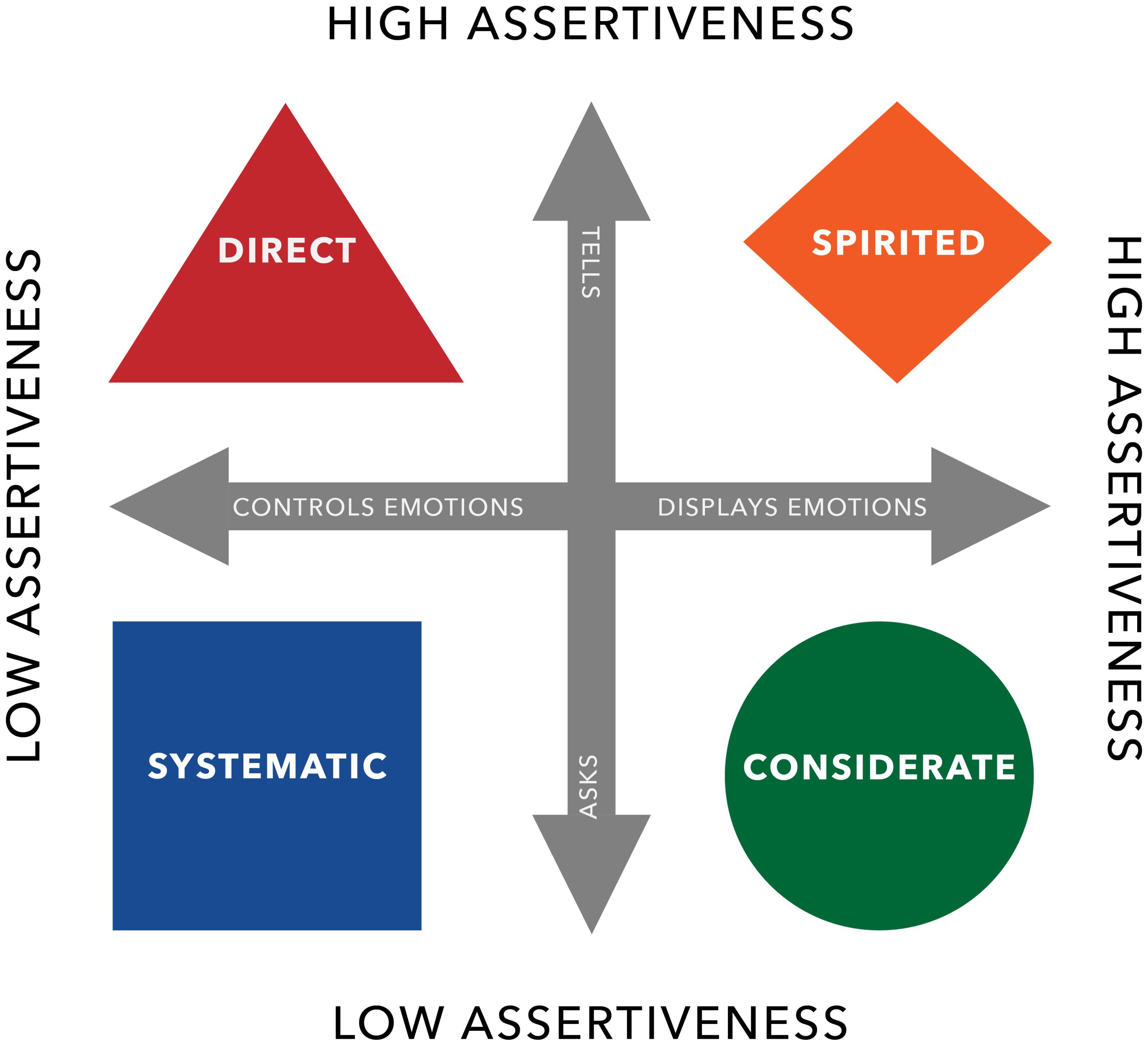Search for articles or browse our knowledge portal by topic.
Effective Communication in Project Management
| Effective Communication in Project Management | Project Classification | |||
| Capital Improvement Projects | Safety Projects | Asset Management Projects | Maintenance Projects | |
| 1. Overview | x | x | x | x |
| 2. Communication Factors | x | x | x | x |
| 3. Communication Tools and Methods | x | x | x | x |
|
x | |||
| 4. Communication with the Public | x | x | x | x |
| 5. Communication Styles and Obstacles | x | x | x | x |
| 6. Common Communications in the Project Development Process | x | |||
| x = Information from the topic may be applicable for the project classification. | ||||

Project communication spans the entire project life cycle, from initiation through closeout, and beyond. To communicate efficiently and effectively, PMs should:
- Develop a communication plan whose level of detail is commensurate with the project’s complexity
- Distribute information using methods that are most effective for the recipients
- Maintain project-related information and data in a document management system (see the HKP article Document Management, Storage, and Archival)
Project Managers have access to resources that can support project communication. For instance, when an engineering consultant is hired for project development, the PM may utilize the consultant’s staff to create a communication plan, disseminate information, and manage project documentation effectively.
By addressing the 5Ws and 1H of communication (Rajkumar 2010), PMs can effectively communicate information on a project’s expectations, schedule, and status to the PDT:
- Who is involved in the communication process — Identify the internal stakeholders (e.g., PDT members, subject-matter experts (SMEs)), interagency staff, and external stakeholders (i.e., the public).
- What is being communicated — The message or information distributed. This may take the form of a project deliverable.
- When the information is communicated — Weekly, monthly, quarterly, at project milestones, during a project development phase, or as identified.
- Why the communication is necessary.
- Where the communication takes place.
- How information is distributed (i.e., the communication channel)— In a meeting, a memorandum, an email, a newsletter, a presentation, or another medium.
PMs must ensure the PDT delivers timely and accurate information to all stakeholders and receives feedback from these stakeholders.
Table 1 describes several communications tools PMs use to organize and present project information.
| Table 1: Communication Tools for Project Managers | ||
| Tool | Description | |
| Work Breakdown Structure (WBS) | Breaks down a project into smaller components, each of which may be a product or service. It is a hierarchical breakdown of the scope of work the PDT will carry out. Note: include production hours for the engineering consultant to create and update the WBS. | |
| Gantt Chart | A chart of the project schedule. It shows the durations of and relationships between work activities or tasks. Critical path project templates (Microsoft Project files) are available in the Project Time Management article. Note: include production hours for the engineering consultant to create and update the Gantt Chart. | |
| ProjectWise | KYTC’s main document storage and filing platform. For more information see the ProjectWise Standard Project Folder Structure Policy | |
| Program Delivery Platform (PDP) | Tracks project information, including budget, schedule, project component status, and Communicating All Promises (CAPs). | |

When deciding on the best form of communication, PMs should consider the urgency and type of information being sent and the method of communication the recipient(s) finds most effective. Table 2 reviews different communication channels and their use cases. The columns Urgency and # of Recipients indicate using color-coded dots situations in which each communication channel is appropriate. For example, emails are suitable for communications that have a low- or medium-level priority and those which will be sent to a low, medium, or high number of recipients.
| Table 2: Communication Channel Use Cases | ||||||||||||||||
| Communication Channel | Documentation Available? | Urgency | # of Recipients | Considerations | ||||||||||||
| Yes |
|
|||||||||||||||
| In-Person/Virtual Meeting | Yes |
|
||||||||||||||
| Instant Messaging | Yes |
|
||||||||||||||
| Phone Call | No |
|
||||||||||||||
| Letter of Memorandum | Yes |
|
||||||||||||||
| Press Release | Yes |
|
||||||||||||||
| Report | Yes |
|
||||||||||||||
| = High | = Medium | = Low | ||||||||||||||
PMs should keep in mind the benefits, disadvantages, and limitations of different communication channels. For example, virtual meetings can produce different outcomes and forms of interaction than in-person meetings because verbal or visual cues evident during face-to-face meetings (e.g., body language, voice inflections) may not be detectable in a virtual meeting, especially if participants leave their cameras off. As such, PMs need to weigh these considerations when selecting a communication channel to use.
3.1 Project Development Milestone Meetings
Communication often occurs during project milestone meetings or regularly scheduled status meetings. These meetings include:
- Project Scoping Meeting
- Scope Verification Meeting (as needed)
- Pre-Design Conference
- Conceptual Design Meeting
- Public Involvement Meeting (or Hearing)
- Preliminary Line and Grade (PL&G) Meeting
- Joint or Final Inspection
- Drainage Inspection
- Right of Way Inspection
- Letting Review Meetings (monthly)
- District Project Status Review Meetings
For more information on conducting effective meetings and the information or deliverables exchanged at meetings, see the HKP articles Organizing and Running Effective Project Development Meetings and Common Project Team Meetings.
PMs should work with District Public Information Officers (PIOs) to keep the public informed of project activities and incorporate their concerns and suggestions into the decision-making process. The level and frequency of communication with public stakeholders depend on how the project will impact the public and environment. Communicating with the public may entail providing information at public or stakeholder meetings or meeting with individual property owners. A PIO may share project information through newsletters, social media, websites, or other media. For more information, see the Highway Design Guidance Manual (HD-600) and the HKP article Public Involvement with Customers and Stakeholders.
The public is usually not familiar with jargon used by PMs and SMEs. Implementing the practices below will improve communication with public stakeholders (after Bruzzese 2015):
- Do not assume the audience has basic technical knowledge of your project.
- Provide visualizations (e.g., maps, charts, photographs) that illustrate why the project is needed.
- Develop a deep understanding of how the project will help the public and present that information to public stakeholders using non-technical language.
- Never talk down to public stakeholders or conduct yourself in a way that could leave them with the impression you are talking down to them.
- Do not overwhelm the public with data. Only include numbers or statistics if you can associate them with something the public needs to know. Visualize information with charts, maps, and timelines.
- Ask a coworker without a technical background or specific project familiarity to watch a practice presentation or review meeting materials. Use their input to improve the presentation.
- Give public stakeholders multiple ways to submit feedback.
Communication styles differ between people. As such, PMs need to be self-aware of their communication style and understand the style of each PDT member. To avoid miscommunication and improve collaboration, PMs may need to flex their interaction.
AASHTO’s Technical Committee on Project Management describes four communication styles in its webinar, What is My Communication Style? Table 3 summarizes each style and gives recommendations on flexing methods for each.
Graphic to the right is a recreation. Original source: (Dillon, 2023)

| Table 3: Communication Styles | ||||
| Communication Style | Characteristics | Flexing Style | ||
| Direct | • Decisive, direct, loud, formal, direct eye contact, bold | • Focus on goals, maintain a businesslike tone, argue facts, ask direct questions, speak quickly | ||
| Spirited | • Generalizes, expresses emotions, persuades, loud, animated | • Focus on inspiring ideas, be supportive, don’t rush, brainstorm, be upbeat and open to ideas | ||
| Considerate | • Listens, supportive, speaks slow and soft | • Focus on relationships, understand needs and be supportive of feelings, keep a relaxed pace | ||
| Systematic | • Precise, detail-oriented, brief and even speaking | • Focus on facts, be thorough and organized, provide data, be precise, allow time for analysis | ||
The webinar is available on AASHTO’s Technical Committee on Project Management website.
PMs can further strengthen communication with PDT members by:
- Considering the needs and the feedback of team members and stakeholders
- Sharing accurate information in a timely manner
- Encouraging open, respectful, face-to-face conversation
- Creating an environment where others feel comfortable contributing to project communication and constructively challenging ideas
- Offering multiple ways to send and receive information
- Remembering that communication is bi-directional and requires active listening
- Involving leadership when necessary
- Coordinating communication needs for each project milestone
- Ensuring that messages are clearly understood by all parties
- Focusing on information needed for project development
Bruzzese, A. (2015, December 15). “How to Explain Technical Information to Non-Techies”. Quickbase, quickbase.com/blog/how-to-explain-technical-information-to-non-techies. Accessed 3 January 2023.
Dillon, B. (2023, October 26). What is My Communication Style? [Webinar]. AASHTO Technical Committee on Project Management. https://transportation.org/design/technical-committees/project-management/
Project Communication Handbook. (2007). Caltrans Office of Project Management Process Improvement. Sacramento, CA.
Rajkumar, S. (2010). Art of communication in project management. Paper presented at PMI® Research Conference: Defining the Future of Project Management, Washington, DC. Newtown Square, PA: Project Management Institute.
Project Management Guidebook Knowledge Book:
Access the complete Knowledge Book here: Project Management Guidebook Knowledge Book
Next Article: Project Management & Planning
Previous Article: Common Project Team Meetings

